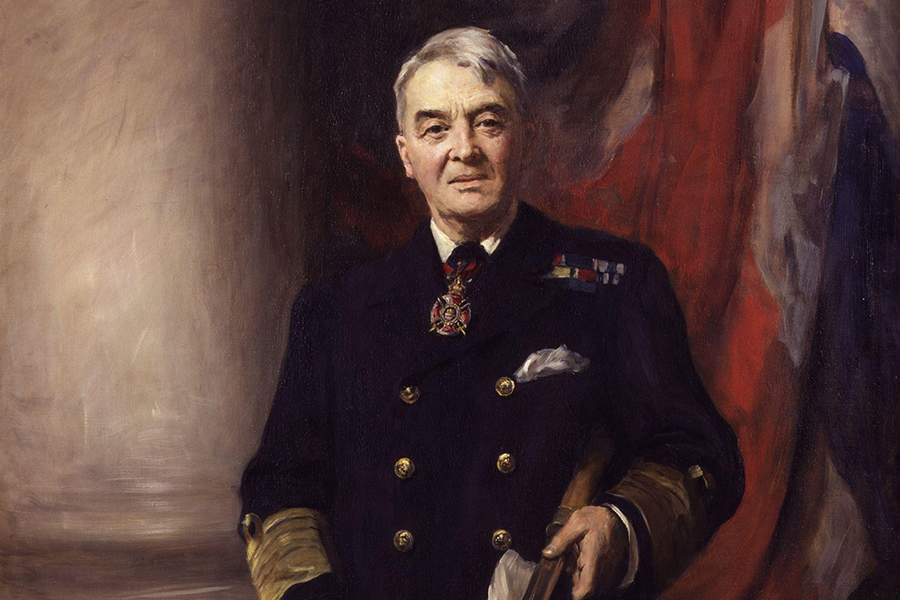As a means to success, disruption has become an ambitious goal for many leaders, despite the complex nature of doing it well. Disrupting established ways of doing business yields impressive results, often signaling industry-wide pivots. But it’s not easy to bring about major change, particularly in legacy entities that intrinsically don’t like change. So when it happens, it’s a remarkable feat.
Sometimes innovation requires embarking on something so revolutionary that the old way of doing things becomes obsolete. Creative destruction—a term coined by economist Joseph Schumpeter—dictates that an organization must be willing to introduce a new product or business model that destroys the basis of its current success to remain viable in the future. It’s a radical way of doing business, cannibalizing something that works in favor of advancing the new.
One of the greatest examples of disruptive leadership is Admiral Jacky Fisher (1841-1920), pictured above, renowned for his influence and reform of the Royal Navy, the shield that protected Britain and its Empire. He possessed inexorable energy and towering self-confidence from an early age, rising through the ranks quickly and proving to be a natural leader. As the commander in chief of Britain’s principal battle fleet, he enacted a culture change that brought grossly deficient skills into superb fighting shape. It was a necessary upgrade to the fleet that guarded India’s shipping route, the crown jewel of the British Empire, ushering in a doctrine of tactical and strategic thinking.
Part of Fisher’s success was due to his blunt nature. He did not play it safe, ignoring seniority and railing against bureaucracy. He stood for change, reform, efficiency, and readiness, breaking down traditional social class barriers. He instituted educational equality regardless of social origins, ensuring that all cadets received proper seamanship and engineering training. And his most important decision was to engage in creative destruction by building an entirely new battleship, the HMS Dreadnought, when he was the supreme commander (“First Sea Lord”) of the Royal Navy (1904-1910).
Early on, Fisher predicted where naval technology was going. Standard battleships had four 12-inch guns, supported by various smaller-caliber weapons. But Fisher was working with maritime engineers to design a fast new battleship with all big guns. The resulting blueprint featured an impressive ten 12-inch guns and an untried steam turbine engine system that would make the ship 50% faster than standard ships. Pushing the design even further, Fisher wanted to make the vessel unsinkable. To do this, compartments in the hull were re-envisioned to be self-contained with vertical access, rather than horizontal. If a particular compartment were to rip open, the breach would stay contained, and the ship would survive.
The new ship design was innovative in itself, but so was the manufacturing process. The Royal Navy had never standardized components before, but it allowed production to happen almost three times as fast while driving down significant costs. In fact, this equipped the navy with ships two to three times as powerful, for a mere 10% more.
Once at sea, the Dreadnought performed admirably and became the flagship of the Home Fleet. It was so revolutionary it made all existing battleships obsolete. Fisher faced a lot of criticism because Britain had a commanding lead over other nations in these “pre-Dreadnought” battleships, which was wiped out with one stroke. Imagine what the reaction would be if America’s supreme admiral would introduce a new weapon that would wipe out the country’s overwhelming lead in carriers. After the Dreadnought was introduced, there was no turning back. The German navy raced to produce their own higher-caliber ships, but it was impossible to catch up. By the time World War I started, Britain had 29 dreadnaughts and prevailed in one of the largest naval battles in history. If not for Britain’s naval superiority, there is little doubt that Germany would have won the war.
Fisher exemplified disruptive leadership by addressing potential problems with new thinking and solutions. He was among the first to demand reforms in technology, human resource management, and tactics and strategy at sea. His purposeful change was founded on careful thinking and experimenting with possible solutions before committing. His decision to launch the Dreadnought is an example of creative destruction and the innovator’s dilemma to allocate resources to improve products incrementally or to use those resources to develop new products that will radically disrupt and possibly make the current operation obsolete.




































